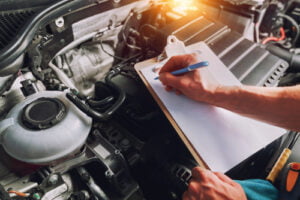Professional car checks are very important for keeping your car running well and keeping you safe on the road. It doesn’t matter how experienced or new a driver you are; thorough checks can keep your car in good shape and make it last longer. We’ll go over some important car inspection tips in this guide to make sure your ride runs smoothly.
I. The Beginning
It’s important to know how important car checks are before you hit the road. Regular checks are not only required by law, but they can also find hidden problems that will save you a lot of money on repairs in the future. By taking the time to do preventative repair, you not only protect your investment, but you also make driving safer for everyone.
II. Getting Ready for the Inspection
Get all of the tools and equipment you’ll need before you start the checking process. A torch, a tyre pressure gauge and some simple hand tools are must-haves. Pick a place with good lighting to check your car, and look at the weather report to make sure you don’t have to work in bad weather.
III. Checking the outside
First, look at the outside of your car. Make sure the tyres have enough tread depth and pressure and look for signs of wear and tear. Check all of the lights and signs to make sure they work properly. Also, look for cracks or damage in the windscreen and wipers.
IV. Checking the inside
Inside the car, check all of the electronic parts, like the radio, air conditioning, and power windows. Look for any signs of damage or failure on the seat belts and seats. Note any danger lights on the dashboard and make sure all the controls work the way they should.
V. What’s Inside
Open the hood and look inside the engine bay. Check the amounts of all the fluids in the car, like the oil, coolant, brake fluid and windscreen washer fluid. Check the belts and hoses for damage or signs of wear, and look for corrosion or leaks in the battery and wires.
Sixth: Under the Car
Slide under the car to look at the bottom. Pay extra attention to the areas around the engine and gearbox for any signs of leaks. Check the steering and suspension parts for damage or excessive wear, and look for leaks or rust in the exhaust system.
7. Take a test drive
Take your car for a test drive after the visual check is done. If you hear any strange sounds coming from the engine or chassis, pay attention. Check how well the brakes and steering work, as well as how fast the car moves and how well the gearbox works.
VIII. Checklist for After Inspection
After the check is over, go over what you found and decide which repairs are most important. Based on what you’ve seen, make a maintenance plan and think about making an appointment with a qualified mechanic to get more information. Writing down the results of your inspections can help you keep track of your car’s health over time.
IX. Tips for Regular Maintenance
Along with regular checks, it’s important to stick to the maintenance plan suggested by the manufacturer. Write down all the maintenance jobs that need to be done and when they need to be done in a detailed log. Doing your own checks can be helpful, but don’t be afraid to get help from a professional for more complicated repairs or inspections.
In conclusion, X
Finally, it’s important to get your car inspected regularly to keep it running well and keep you safe on the road. You can make your car last longer and feel safer behind the wheel by following these important tips and scheduling regular checks as part of your regular maintenance.
Question 1: How often should I check my car?
Visually checking your car at least once a month is a good idea. More thorough checks should be done every six months or as your car’s maker suggests.
2. What should I do if anything goes wrong during the inspection?
If you find any problems during your check, decide which ones need to be fixed first based on how bad they are. If you take care of small problems right away, they won’t get worse and become bigger problems.
3. Should I take my car to a mechanic or can I check it myself?
Although most drivers can do simple inspections, it’s best to get help from a professional if the problem is complicated or if you’re not sure how to do any part of the inspection process.
4. Are there any red flags that tell you I need an inspection?
Yes, typical warning signs include strange noises, dashboard lights, changes in how well the car runs, and fluid leaks that you can see. If you notice any of these signs, you need to check your car right away.
5. How will having regular checks save me money over time?
Routine inspections can save you money on repairs and maintenance over time by finding and fixing possible problems early on. This can keep your car in good shape and avoid expensive repairs.




